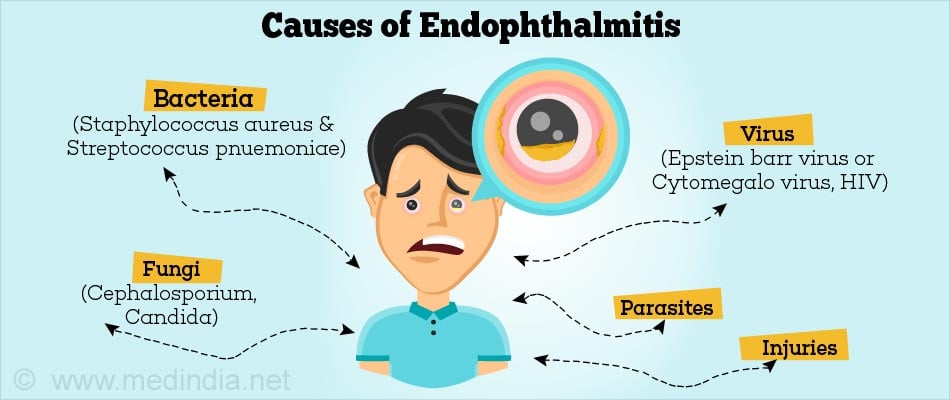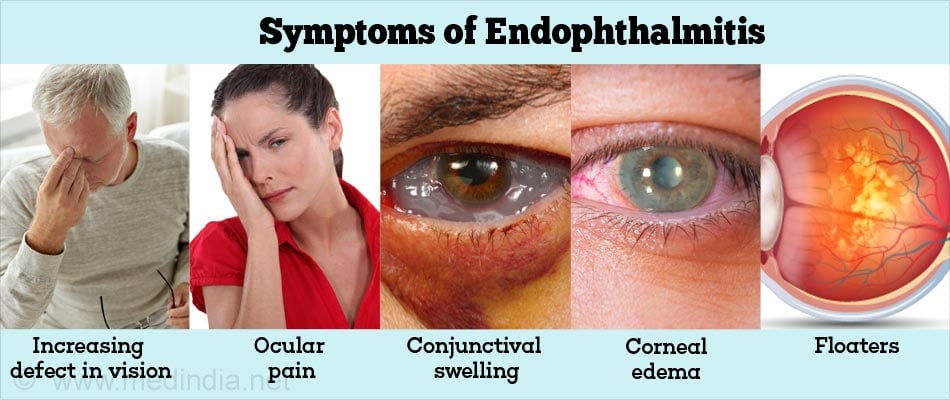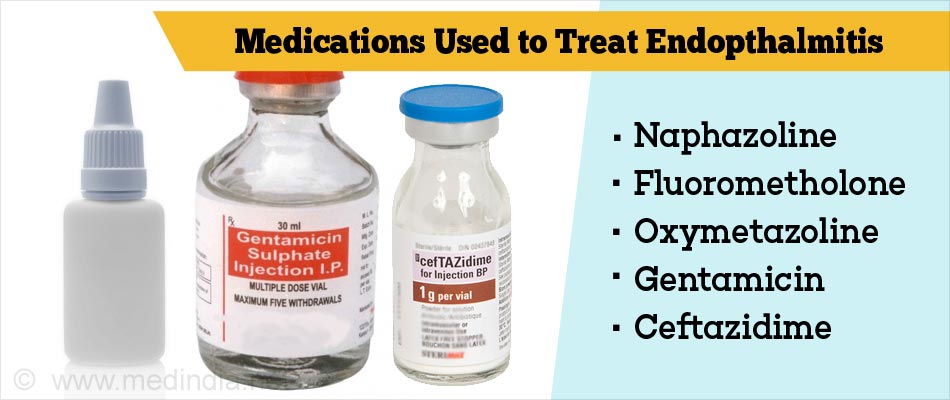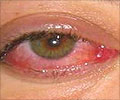- Endophthalmitis: Pathogenesis, clinical presentation, management, and perspectives - (https://www.ncbi.nlm.nih.gov/pmc/articles/pmc2850824/)
- Antibiotics at the time of cataract surgery to prevent bacterial infection of the eye - (http://www.cochrane.org/cd006364/eyes_antibiotics-time-cataract-surgery-prevent-bacterial-infection-eye)
- Endophthamitisandit’s causes - (http://www.sciencedirect.com/science/article/pii/s0161642008007380)
- Transconjunctival corneoscleral tunnel "blue line" cataract incision - (https://www.ncbi.nlm.nih.gov/pubmed/10683792)
What is Endophthalmitis?
Endophthalmitis is a bacterial infection and inflammation of the intraocular cavities (the vitreous humor, the retina and the choroid) of the eye. It is a rare condition but if neglected could cause complete loss of vision and hence requires immediate medical attention.
What are the Types of Endophthalmitis?
There are two types of Endophthalmitis:
- Exogenous Endophthalmitis - It results from direct infection from the outside as a complication of eye surgery, foreign bodies, and penetrating injuries to the eye.
- Post ocular surgery or after eye surgery – this is the most common reason for infection especially after common inocular surgeries like the Know About Cataract.
- Post traumatic or after penetrating injuries – there is a higher risk of losing vision in these cases especially due to delay in giving medical attention or due to age.
- Endogenous Endophthalmitis - It is a rarer kind of endophthalmitis which results from the spread of bacteria from a distant source of infection in the body through the blood stream.
Infection may spread from the infected organ to the eye through the blood stream where the bacteria, fungi or parasites may cross the blood-retina barrier and enter the ocular tissue.
What are the Causes of Endophthalmitis?
Endophthalmitis is caused by -
- Bacteria - aerobic bacteria like Staphylococcus aureus and Streptococcus pnuemoniae which are resistant to postoperative antibiotics
- Fungi - Cephalosporium, Candida, and moulds like Aspergillus and Fusarium
- Virus - Epstein-Barr virus or Cytomegalo virus, herpes simplex or HIV
- Parasites - This infection may result after surgery, injections, injuries, and HIV infections.

What are the Symptoms of Endophthalmitis?
Common Symptoms -
- Increasing defect in vision
- Ocular pain
- Conjunctival swelling or chemosis
- Hypopyon – an inflammatory condition caused by toxins secreted by pathogens
- Corneal edema
- Vitritis – inflammation of the vitreous body
- Reduced fundus view secondary to inflammation
- Floaters: Especially in cases of fungal infection – a sub acute onset of floaters and blurred vision may be associated with ocular discomfort and photophobia
- Keratitis - Inflammation of the cornea which may be bacterial or viral in origin

Rarer Symptoms due to fungal infections -
- In Candida infections - localized fluffy creamy white retinal or sub retinal nodules may be associated with vitreous haze.
Early or peripheral fungal infection may be asymptomatic. But, when infection is severe there is bleeding with necrosis and retinal block.
How do you Diagnose Endophthalmitis?
Endophthalmitis is diagnosed through the symptoms and physical examination with detailed history of the case taken by the physician or the ophthalmologist
Your doctor will check for the following signs to determine endophthalmitis:
- Redness of eyes
- Decreased Reflex
- Corneal edema
- Swelling of eyelids
- Swelling of the conjunctiva
- Drooping of the eyelids (ptosis)
- Protuberance of the eyeball (exophthalmos)
- Hypopyon
- Hemorrhage of the iris
Laboratory Diagnosis: by gram staining and culture; results must turn out positive and show gram negative bacteria or fungal colonies.
How do you Treat Endophthalmitis?
- Direct injection of antibiotics into the eye or vitreous humor followed by topical antibiotic application
- Vitrectomy – drainage of the inflammation in the vitreous humor
- Decongestants and NSAID’s to relieve the pain
- Corticosteroids
The following are the medicines used to treat endophthalmitis -
- Naphazoline is a decongestant, prescribed for conjunctivitis with symptoms of redness.
- Fluorometholone is a corticosteroid, prescribed for the swelling caused by infections, injury, surgery or other conditions.
- Oxymetazoline is a decongestant, used to relieve nasal and sinus congestion due to colds, allergies, and hay fever. Ophthalmic indication is for relieving redness in the eye.
- Combination of intravitreal Vancomycin and Ceftazidime or alternatively combination of Vancomycin and Amikacin is good to treat endophthalmitis.
Other drugs or antibiotics like Gentamicin and Ceftazidime.

How do you Prevent Endophthalmitis?
Endophthalmitis can be prevented by taking the following precautions:
- Antibiotic injection and antibiotic eye drops given together lower the chance of infection.
- Povidine–iodine prophylaxis- prevention by cleaning the vitreous humor of the eye with povidone and iodine prior to surgery.
- Meticulous draping of the eyes to prevent any entry of the pathogens from external sources after surgery.
- Injection of the antibiotic (Cefuroxime) in the eye at the end of surgery lowers the chance of endophthalmitis after surgery.
- Operative technique (blue-line incision) -The blue line incision performed with a diamond knife trans conjunctively, 2 mm behind the surgical limbus during cataract surgery.
- Postoperative injection of sub-conjunctival antibiotics.
Health Tips
- Maintain good hygiene of the eyes before and after surgery
- Avoid injuries to the eyes caused by harsh cosmetics like false eyelashes
- Avoid using old expired eye cosmetics

- Instil povidone-iodine 5% eye drops prior to surgery.
- Carefully drape the eyelid and lashes prior to surgery.
- Use sterile gloves, gowns, and face mask
- Acrylic optics are better than silicone.
- Inject intracameral cefuroxime postoperatively
 MEDINDIA
MEDINDIA

 Email
Email






